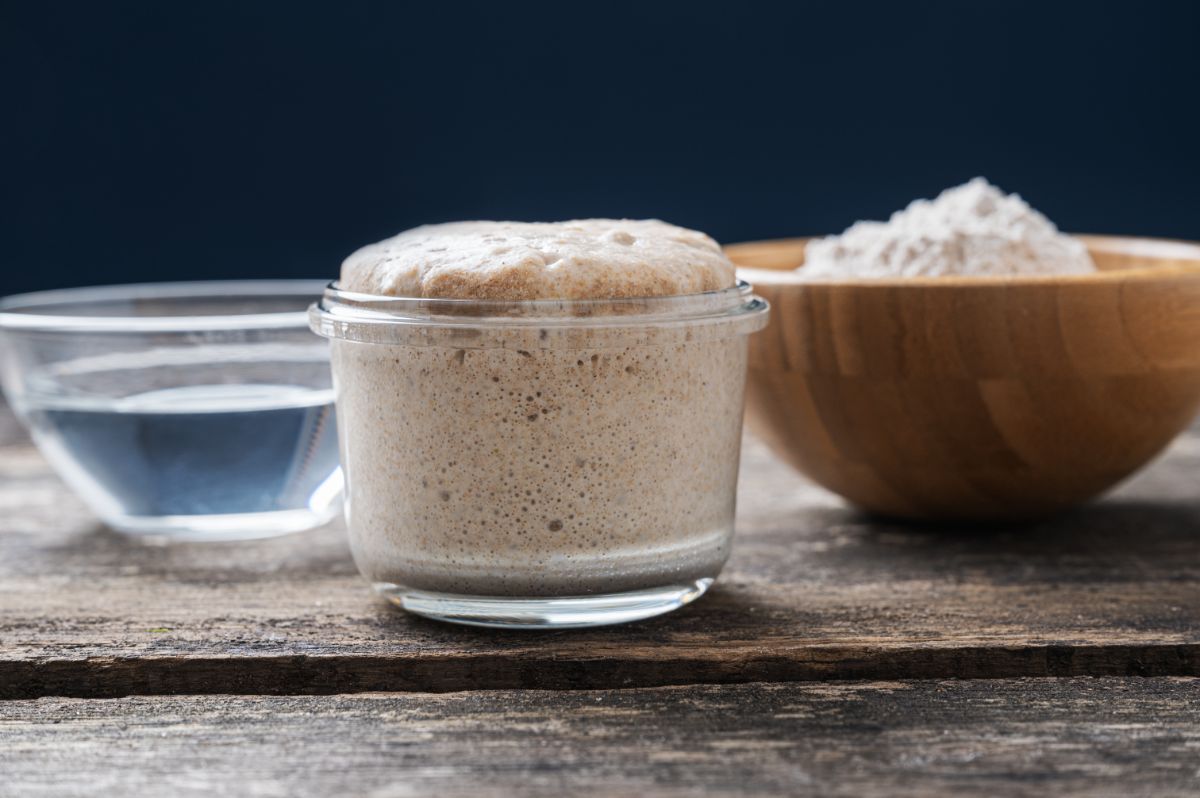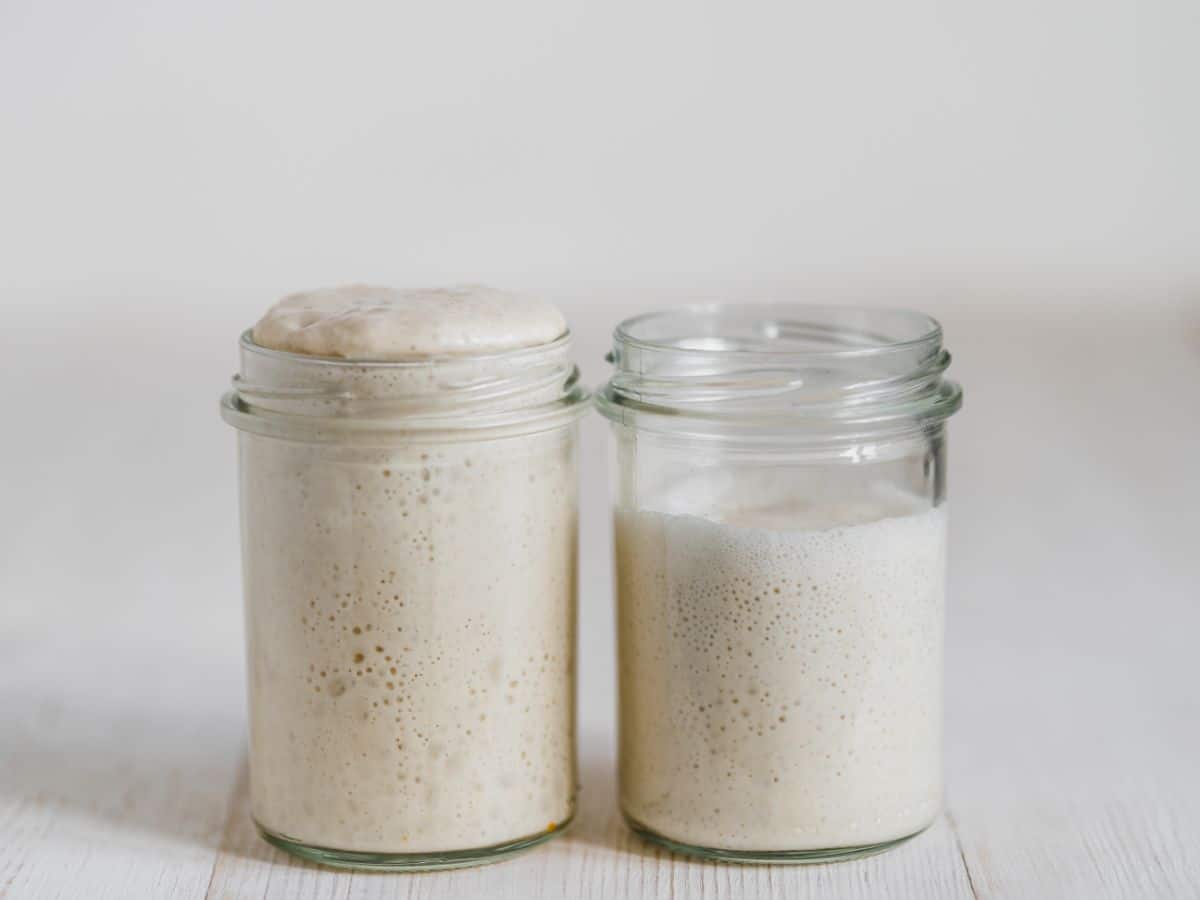If you are a traditional foodie just like me, you know for sure how important it is to feed your sourdough starter for it to stay healthy, active, and bubbly. But, what if you have to stop preparing sourdough bread for a time, or you want to go on that much-awaited vacation?

During these instances, it is a must to know some tips and tricks on how to store your sourdough starter properly for a long time.
The good news is that it is not really that difficult to store a sourdough culture.
Whether your baking hiatus will only be several weeks, or you plan to take a long break for a whole month, you can safely preserve your sourdough starter with ease.
This way, you can expect that your living investment is going to stay healthy and ready all the time to let you get back to your routine immediately.
Freezing the Starter
Yes, believe it or not, you can freeze your sourdough starter. There are many good reasons why you should try to freeze your starter. The use of a frozen preferment gives you an almost instant starter.
Although feeding time and added thawing is required, this will still provide substantial time savings as compared to having to start one from scratch.
It is very convenient to have a preferment ready to go. You can freeze this in portions and thaw what you just need.
This can free you from following a feeding schedule. You also don’t need to worry about having to entrust someone else to feed and maintain your starter every time you go on vacation.
I conducted a simple experiment on my own, and this is when I discovered that a frozen starter performs well for as much as two weeks after it is frozen. Soon, the ice crystals in my frozen preferment grow large enough to damage bacteria and yeasts, which rendered them worthless for leavening.
When you have a sourdough starter that has been frozen for over two weeks, you could still use this together with commercial yeast. A less active starter is going to give your bread a complex flavor, with the yeast helping the dough to rise.
It is very simple to work with a frozen starter even though freezing the starter will involve more than putting this in a jar and keeping it inside the freezer. Let me share with you some easy tips to help you get started:
- Freeze your preferment right after you prepare it. When you freeze a ripe preferment, this will not give your yeast the exact nutrients it requires since little food will be left.
- Divide your preferment to the specific weight you typically use. You can portion directly your stiff starter into zip-top bags. It might be best to add 10 grams to the amount you are freezing since some will tenaciously stay in the bag. Place these bags flat on the sheet pan and they are now ready for freezing. For the liquid starter, portion preferment in your ice cube tray and use an offset spatula to out the tops of cubes. I use a piping bag to inject that into the tray as possible. This will get rid of the air pockets. If it has frozen into some cubes, get rid of them from your tray and put those in a zip-top plastic bag in your fridge.
- Take a portion of your fridge about a day before using it and allow it to thaw at room temperature. Once it is ready, the bag would inflate as CO2 bubbles form in preferment. Once you froze the starter into ice cubes, pull out as many cubes you require for your recipe and put all of them in a bowl, and consider covering them with a plastic wrap.
Drying the Starter

If you are moving across the country and like to take your sourdough starter or you want to mail some to your friend or like to save a backup of a well-loved starter as insurance against accidental loss, a drying starter can be a good way to go.
Drying the liquid starter is fast and simple and reviving this to baking strength takes lesser time and is much easier compared to starting a new one.
Before you dry your starter, ensure that it is vibrant and strong. If you refrigerate it normally, take this out and feed this for several days as you’d before using it in the dough.
When it’s strong and good, feed it the last time, then ferment that for half the time you’d go normally until the next feeding. Like others, you might want the yeast to have something left to feed on while they’re falling asleep.
After that, using a spatula, spread a thin layer of the starter on a parchment, put that somewhere it would be free from flying debris, and wait until it is dry completely.
It’ll take approximately overnight, yet the exact time will differ in accordance to the starter’s hydration, how thick your smear it, and the humidity and temperature in your home. Ensure that it’s completely bone dry and runs a risk of mold.
Give Some Starter to Others as a Gift
If you’re searching for a thoughtful gift that you can give to your friend who likes baking, you might want to consider preparing the culture of sourdough.
To gift sourdough starter to your family and friends, split the culture to separate jars, feed them equal parts of flour and water, and store them in the fridge until they are ready to be given away.
You can add tags and labels, which will help you ensure that it will contain instructions about how the recipient can maintain the gift.
I usually used some customized labels and tags in a classic style for my family and friends. Plus, I baked a loaf of sourdough bread in my breadmaker to give along with my own sourdough starter so my friend can taste the results.

